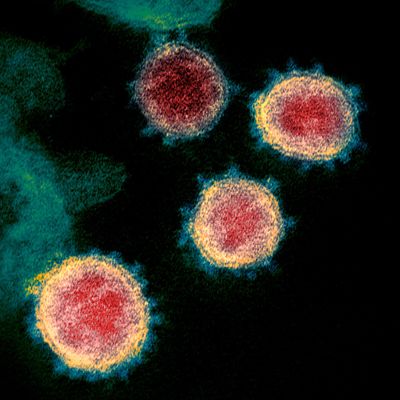
The dominant strain of the coronavirus that has swept through the United States, killing nearly 70,000 people, is a mutant form of the original virus that emerged in China last year, according to a preprint from researchers at the Los Alamos National Laboratory.
The researchers call the mutant strain D614G and wrote that it is more contagious than other strains. The paper, which has not been peer-reviewed, says the strain began its rapid spread in February in Europe and followed the path of the original virus to the U.S., where it quickly became the dominant strain. The L.A. Times describes how the mutated virus spread:
Italy was one of the first countries to see the new virus in the last week of February, almost at the same time that the original strain appeared. Washington was among the first states to get hit with the original strain in late February, but by March 15 the mutated strain dominated. New York was hit by the original virus around March 15, but within days the mutant strain took over.
The researchers, who conducted the study by analyzing the genetic sequence of the virus as it spread across the planet, identified 14 mutations of the virus, but D614G is of “urgent concern,” they wrote. Not only has this particular form of the virus spread rapidly, but researchers warn that it may leave “individuals susceptible to a second infection.”
The Times quoted from the Facebook page of Bette Korber, the leader of the study, which was conducted by tracking mutations in the genetic sequence of the virus:
“The story is worrying, as we see a mutated form of the virus very rapidly emerging, and over the month of March becoming the dominant pandemic form,” study leader Bette Korber, a computational biologist at Los Alamos, wrote on her Facebook page. “When viruses with this mutation enter a population, they rapidly begin to take over the local epidemic, thus they are more transmissible.”
Several experts raised issues with the suggestion that the mutant form of the virus spread more rapidly because of its unique characteristics. Rather, tweets Bill Hanage, an associate professor at Harvard T.H. Chan School of Public Health, the mutant form may have become dominant by chance.
He expanded on his comments in an interview with Gizmodo: “The great majority of sequenced isolates now descend from the European outbreak, which has spread more extensively than the Chinese one. That could be because it is more transmissible, but it could also be because the relatively late interventions allowed it to spread more.”
In an email to the Washington Post, National Institutes of Health director Francis Collins said the paper “draws rather sweeping conclusions” about D614G.
Angela Rasmussen, a Columbia University virologist, tweeted that the D614G may very well be a more transmissible form of the virus, but the Los Alamos study is not a good way to determine that. “We won’t know until this is tested experimentally,” she wrote.
The study’s conclusions, if believed, throw cold water on the hopes that the virus that causes COVID-19 is mutating slowly, which researchers have said makes them hopeful about the development of a vaccine. Typically, more mutations complicate the vaccine-development process and it was concerns over that issue that motivated the Los Alamos researchers to conduct the study in the first place. “The interventions under development now cannot afford to miss their contemporary targets when they are eventually deployed,” they wrote.





























